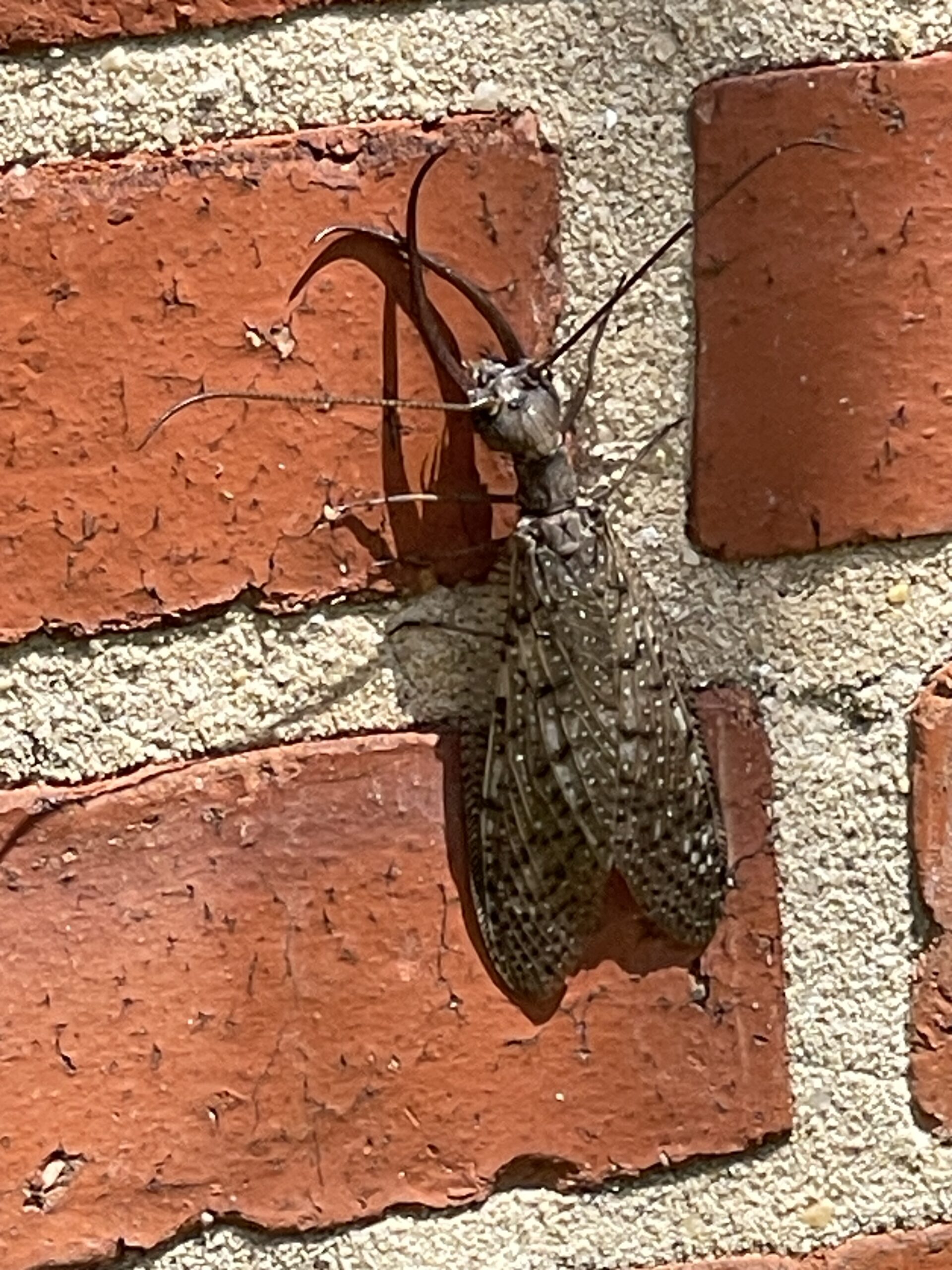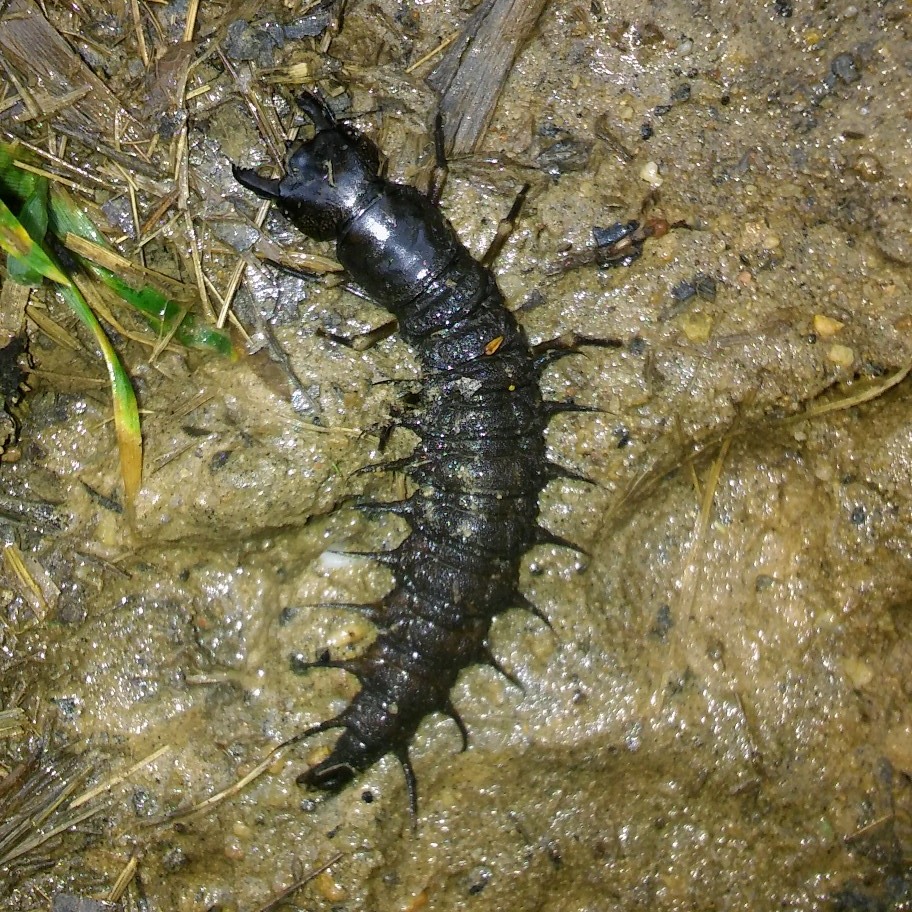You never know what you’re going to come across here at Savage Mill. This old complex of buildings on the banks of the Little Patuxent River is full of unexpected delights, including many connections to the nature that surrounds us. Take this afternoon as an example.
It’s a Bird! It’s a Moth! No, it’s a Dobsonfly!
A movement on the brick outside the window of the Paymaster’s Office, the management office for the Mill, caught our eye. At first we thought it was the wing of a bird. But what was that long thing that appeared to be an antenna? We went outside to investigate.
Nestled in the shade at the side of the window frame was a large insect with big wings and mandibles. It looked dangerous, but we figured that was unlikely. Fortunately, one of our colleagues, Jeremy, walked by and immediately identified it as a dobsonfly.
The Bug Guy
A great resource for insect-related questions in Maryland is Mike Raupp, aka The Bug Guy, a former entymology professor at the University of Maryland who maintains a blog called Bug of the Week. A quick search of his site confirmed that Jeremy was correct and that our insect was a male. We learned some fun information.
The dobsonfly belongs to the megalopteran family – think of a megalodon dinosaur. Interestingly, despite its large wingspan – over 7 inches – it is a weak flyer. The one we spotted didn’t try to fly, instead walking down the brick wall, perhaps heading towards shade in the flower bed.

Seldom Seen
Because they are primarily nocturnal creatures, dobsonflies are seldom seen. In addition, once a dobsonfly metamorphoses into its adult form, it only lives for about a week. During that time, it looks for a mate, the male using its impressive mandibles to fend off other suitors by attempting to flip them. They can be found on bridges and other structures near streams. We surmise this is why the dobsonfly found its way to us.
The females lay a cluster of up to 1,000 eggs on a branch overhanging the water. Upon hatching, the larvae drop down into the water, where they will live for 1-5 years, feeding on aquatic life and developing an impressive look of their own. Known in their immature stage as hellgrammites, the larvae are an important indicator species for healthy water. They’re a valuable food source for fish and popular bait for anglers, who are often seen fishing the Little Patuxent River up- and downstream of the Mill.

More to Discover
What else is hiding in plain sight here at Savage Mill? We don’t know! Things appear in rhythm with the seasons of the year and in response to the weather and other factors. So on your next visit to Savage Mill – whether it’s daytime or night, cold or warm, summer or winter – take a close look around. There’s more than meets the eye awaiting discovery.
